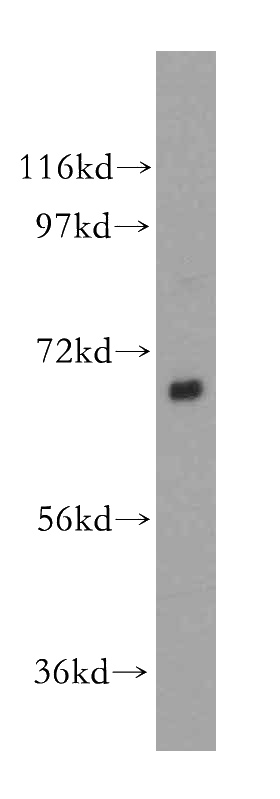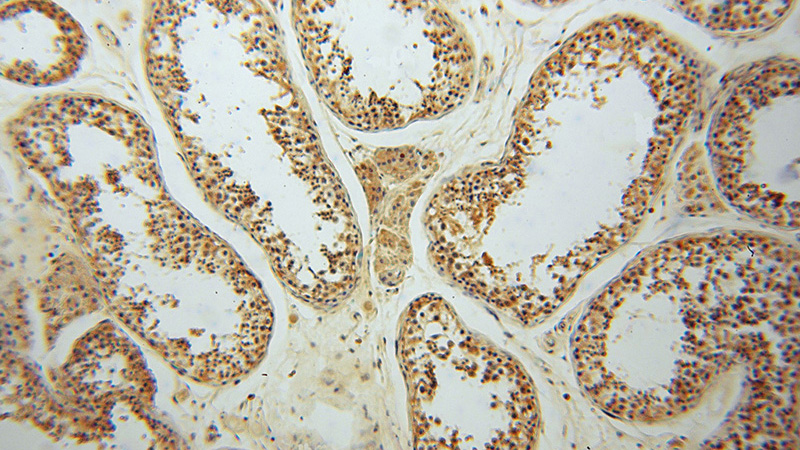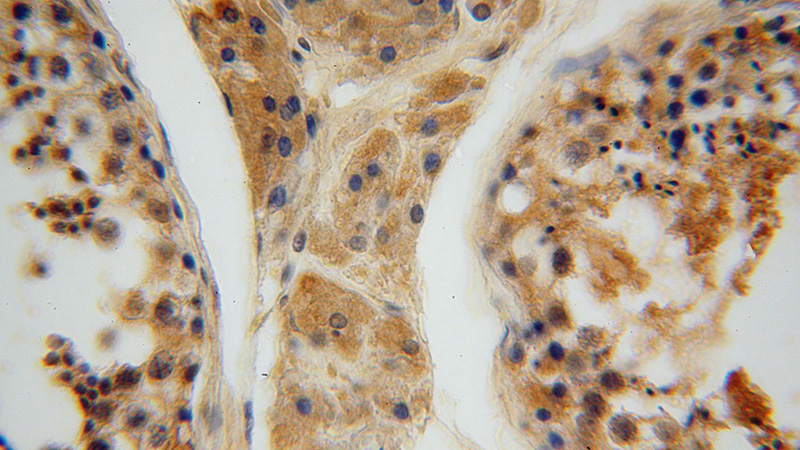-
Product Name
HIP14; ZDHHC17 antibody
- Documents
-
Description
HIP14; ZDHHC17 Rabbit Polyclonal antibody. Positive IHC detected in human testis. Positive WB detected in Raji cells, human kidney tissue. Observed molecular weight by Western-blot: 70kd
-
Tested applications
ELISA, WB, IHC
-
Species reactivity
human, mouse, rat; other species not tested.
-
Alternative names
ZDHHC17 antibody; HIP14 antibody; Palmitoyltransferase ZDHHC17 antibody; HIP 14 antibody; DHHC 17 antibody
-
Isotype
Rabbit IgG
-
Preparation
This antibody was obtained by immunization of HIP14; ZDHHC17 recombinant protein (Accession Number: NM_015336). Purification method: Antigen affinity purified.
-
Clonality
Polyclonal
-
Formulation
PBS with 0.02% sodium azide and 50% glycerol pH 7.3.
-
Storage instructions
Store at -20℃. DO NOT ALIQUOT
-
Applications
Recommended Dilution:
WB: 1:200-1:2000
IHC: 1:20-1:200
-
Validations

Raji cells were subjected to SDS PAGE followed by western blot with Catalog No:111353(HIP14; ZDHHC17 antibody) at dilution of 1:400

Immunohistochemical of paraffin-embedded human testis using Catalog No:111353(HIP14; ZDHHC17 antibody) at dilution of 1:50 (under 10x lens)

Immunohistochemical of paraffin-embedded human testis using Catalog No:111353(HIP14; ZDHHC17 antibody) at dilution of 1:50 (under 40x lens)
-
Background
Post-translational modification by the lipid palmitate is crucial for the correct targeting and function of many proteins. Polyglutamine expansions of huntingtin protein are responsible for the Huntington neurological disorder. ZDHHC17 gene encodes palmitoyl transferase huntingtin interacting protein (HIP14) which regulates palmitoylation and distribution of hungtingtin. The latter is implicated in the formation of inclusion bodies and enhanced neuronal toxicity. HIP14 was also shown to control neurotransmitter release.
Related Products / Services
Please note: All products are "FOR RESEARCH USE ONLY AND ARE NOT INTENDED FOR DIAGNOSTIC OR THERAPEUTIC USE"
